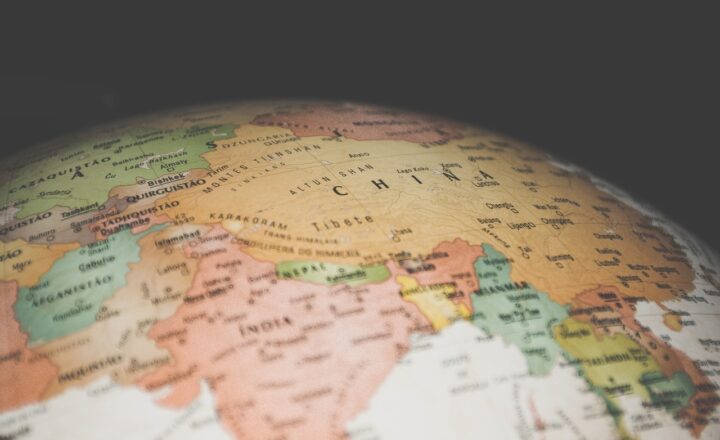How Myths and Legends About the Sun and Moon Influenced Early Calendars and Religious Practices
November 17, 2024

The celestial bodies of the sun and moon have captivated humanity for millennia, inspiring awe and reverence that transcends cultures and epochs. From ancient civilizations to modern-day discussions, myths and legends surrounding these luminous orbs have profoundly shaped human thought, societal structures, and spiritual practices. One of the most significant impacts of these celestial bodies has been on the development of early calendars and the rituals practiced within various religious frameworks.
## 1. The Sun: A Symbol of Life and Order
The sun has long been viewed as a life-giving force, the ultimate source of energy for our planet. Ancient cultures, including the Egyptians, Incas, and Greeks, personified the sun as deities with incredible influence over agriculture, fertility, and daily life.
– **Egyptian Religion**: In ancient Egypt, Ra was the sun god and considered the ruler of all creation. He was believed to journey through the underworld each night, battling chaos before rising each day, symbolizing rebirth and regeneration. The Egyptians developed solar calendars based on the heliacal rising of Sirius, which marked the annual flooding of the Nile—an event crucial for agriculture.
– **Mayan Culture**: The Maya civilization created one of the most sophisticated calendar systems in history, heavily influenced by their observations of the sun. The solar calendar, called the **Haab’**, consisted of 365 days, reflecting the solar year, and was paired with the **Tzolk’in**, a 260-day ritual calendar, to form a continuous cycle called the **Calendar Round**.
– **Roman Influence**: The Romans also adopted solar worship, leading to the Julian calendar reform by Julius Caesar in 46 BCE, introducing leap years to align with the solar year more accurately.
The common theme across these cultures is the recognition of the sun’s predictability and its vital role in determining the rhythms of life. This understanding heavily influenced agricultural practices and the establishment of harvest festivals, many of which continue in modified forms today.
## 2. The Moon: A Beacon of Mysteries and Cycles
In contrast to the sun’s steadfastness, the moon has been viewed as a symbol of change and impermanence. Many early cultures interpreted the moon’s phases as a representation of life cycles, and this mystical nature led to diverse interpretations across various societies.
– **Chinese Calendar**: The Chinese lunar calendar is based on the moon’s cycles, with months beginning at new moons. This calendar gives rise to traditional festivals such as the **Mid-Autumn Festival**—celebrating the moon and harvests—reflecting the moon’s role in agricultural timing.
– **Luna in Roman Mythology**: The Romans worshipped Luna, the goddess of the moon, reflecting its importance in social and religious contexts. The new moon was often a time for new beginnings, and lunar cycles informed calendars and agricultural practices, giving structure to farming schedules and religious observances.
– **Native American Traditions**: Various Native American tribes also relied on lunar positions to determine seasonal activities like planting, harvesting, and hunting. Each month had specific names based on the natural indicators related to agriculture and animal behavior.
The moon’s profound influence on cultural practices is evident in the way it has been integrated into spiritual and religious ceremonies, often symbolizing the cyclical nature of life and time.
## 3. The Interplay of Sun and Moon in Religious Contexts
The relationship between the sun and moon has not only been pivotal in the development of calendars but also in shaping religious narratives and rituals. Many myths intertwine the two celestial bodies, illustrating their roles as oppositional forces yet complementary in marking the passage of time.
– **Zoroastrianism**: In ancient Persian religion, Zoroastrianism regarded the sun as a representation of Ahura Mazda, the supreme deity symbolizing truth and order, while the moon was associated with the opposing force of darkness and chaos. The sun’s cycle represented divine dominance over evil, influencing worship practices that involved prayers timed with solar movements.
– **Balinese Hinduism**: Balinese ceremonies often celebrate both the sun and moon, depicting their intertwined existence in ritual space. The full moon is a time for community cleansing, while the new moon is associated with introspection and spiritual renewal.
– **Christian Practices**: The synchronization of the lunar cycle with solar festivals can also be observed in the Christian calendar. Easter, for instance, is determined by the full moon following the vernal equinox, reflecting early Christian adaptations of earlier pagan practices rooted in solar and lunar rites.
These connections between sun and moon underscore the complexity of early religious systems, emphasizing their shared roles as markers of time and contentions of life itself.
## 4. Conclusion: The Legacy of Celestial Influences on Society
The myths and legends surrounding the sun and moon have left an indelible mark on cultural practices, ranging from calendars to religious observances. Through the lens of mythology, these celestial bodies represent more than just physical entities; they embody the rhythms of life, agricultural cycles, and the deep-seated beliefs that have shaped human understanding of existence.
In conclusion, the narratives forged around the sun and moon continue to influence modern calendars and religious practices, offering insights into the profound ways in which humanity has woven its existence with the cosmos. As we gaze up at the sky, these enduring symbols remind us of our connection to the universe, the cycles of nature, and the timeless dance between light and darkness.







